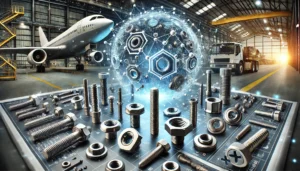Almost every industry has an equipment lifting section responsible for the movement of hefty loads from one spot to another. However, a safety net is essential during the processes of moving or operating these heavy lifting machines or safety procedures must be in place. Preceding accidents, injuries, or death can be avoided by performing the outlined steps or guidelines. These protocols are designed to help protect the health of employees, increase work efficiency, and extend the lifespan of the lifting machinery cited above. The tips for the optimal use of lifting equipment in the workplace are provided below.
1. Conduct Regular Inspections and Maintenance
Before utilizing any lifting equipment, one must ensure that proper examinations are done first. A thorough examination should be done on the hoists, chains, ropes, hooks, and the various other control components mechanisms. Routine servicing must also be done to ensure the lifting apparatus is operational at all times. Adjustments such as repairs or replacements should be made before any use if it is found that there is some wear and tear on the machinery. Proper servicing greatly aids in accident prevention due to malfunction of the apparatus. These measures guarantee that the lifting apparatus continues to remain in working order.
2. Provide Comprehensive Training
Everyone who uses lifting machinery must be adequately trained. This extends far beyond the operation of the equipment to encompass safety measures, load management, emergency procedures, and the limits of the equipment. Training also needs to be refreshed in case there are newer developments in equipment and safety procedures. Standardized training programs are beneficial in minimizing human error, making sure that all operators have the requisite skill and knowledge on how to use the equipment and operate in different lifting situations.
3. Follow Manufacturer Standards
When using and taking care of the lifting tools, the user must always adhere to the specified guidelines. Important information includes the maximum load in weight that is, the procedures and the features of the machine and how to maintain it. Not having these recommendations can result in breakdowns of equipment leading to unsafe and ineffective operations. In addition to that, these guidelines should be checked for updates to make sure that safety requirements are complied with.
4. Implement Safe Operating Practices
Safe operating practices are fundamental to lift equipment being used in the proper manner. Employees should abide by a standard operating procedure (SOP) which includes secure load checking, load controlling, correct lifting practices, and communication. Operators should refrain from side pulls and ensure that the load is properly centered for lifting as this will enhance stability. Personnel who are only trained in the operation of lifting appliances should be allowed to use them, and all operators shall ensure that they do not exceed the rated load limits.
5. Ensure Proper Load Handling
Always check if the load is secured and within weight limits of equipment before lifting. Always check that slings, hooks and other lifting tools are in a proper working condition for the task. Lifting devices should not be employed to lift or shift heavy loads beyond their designed maximum limits for such actions may easily result in the breakdown of the equipment or even accidents. Loads should at all times be proportionate and properly centered to avoid shifting during movement.
6. Maintain Clear Communication
Safety is ensured through effective communication of all personnel involved in lifting operations. Activities such as using radios or standard hand signals should be employed to convey instructions and updates about the lift. This prevents accidents caused by communication problems and ensures that everyone understands the status of the operation. The operator should make sure everyone is in position and ready for the lift. Effective communication guarantees that the lifting operations are done effectively and safely.
7. Monitor Environmental Conditions
Weather, lighting, and the condition of the workspace are just some of the environmental factors that could jeopardize the safety of the lifting task. If the weather turns bad, operators must remain cautious, especially if there are high winds or low visibility as they can make load control difficult. Likewise, workplaces should ensure proper illumination for lifting operations especially if there are areas that will be manned by the lifting equipment at night or in a poorly lit environment. Also, removing or accounting for hazards such as uneven floor surfaces, blockages, or other equipment is important to avoid accidents.
8. Implement Emergency Procedures
Constructing and disseminating emergency response plans is necessary in cases of accidents or breaches in equipment. Employees ought to be adequately educated about the emergency measures procedures. These include but are not limited to dropping loads, equipment fails, or onsite injuries. The workplace must have functional evacuation routes, first aid stations, and efficient emergency contacts. Regular emergency simulations must be carried out to ensure all employees understand the processes and are capable of acting efficiently during an emergency.
9. Supervise the Proper Use of Personal Protective Equipment (PPE)
Lifting equipment requires the workspace to have basic safety measures. The use of personal protective equipment (PPE) is one of the many measures. The employee’s specific risk at every lifting operation must be considered when providing sets of PPE which include but are not limited to hard hats, gloves, steel-toed boots, high-visibility attire, and eye protection. PPE is meant to shield the workers from hazards such as falling debris, collisions, and other accidents during lifting operations. Employers are to ensure that all PPE given to operators is in good condition and replaced when necessary to maximize risk management for all lifting operations.
10. Conduct Regular Safety Audits
Regular safety audits are essential in evaluating the protective measures in place and determining their sufficiency at fulfilling the required safety protocols. These audits provide feedback on the existing gaps in the safety policies set in place and also try to foresee unattended risks. Employees ought to be motivated to voice safety issues they might have and such issues need to be handled immediately. Also, audits should confirm that the lifting appliances are used in accordance with the instructions issued by the manufacturers and that safety features such as load and warning devices are working and set correctly.
Conclusion
Safety when lifting in the working environment is cardinal to avoiding incidences and safeguarding the workers. Compliance with some safety measures such as frequent checks, proper supervision, and use of protective clothes increases health safety. Employers can lift the burden of risking the safety of workers who operate lifting implements by having policies on systematic and undocumented communicative operational methods, safety rules, and checks in place. More focus on safety in the workplace increases productivity while at the same time reduces loss of working hours and promotes a safety culture that benefits employees and the organization at large.










